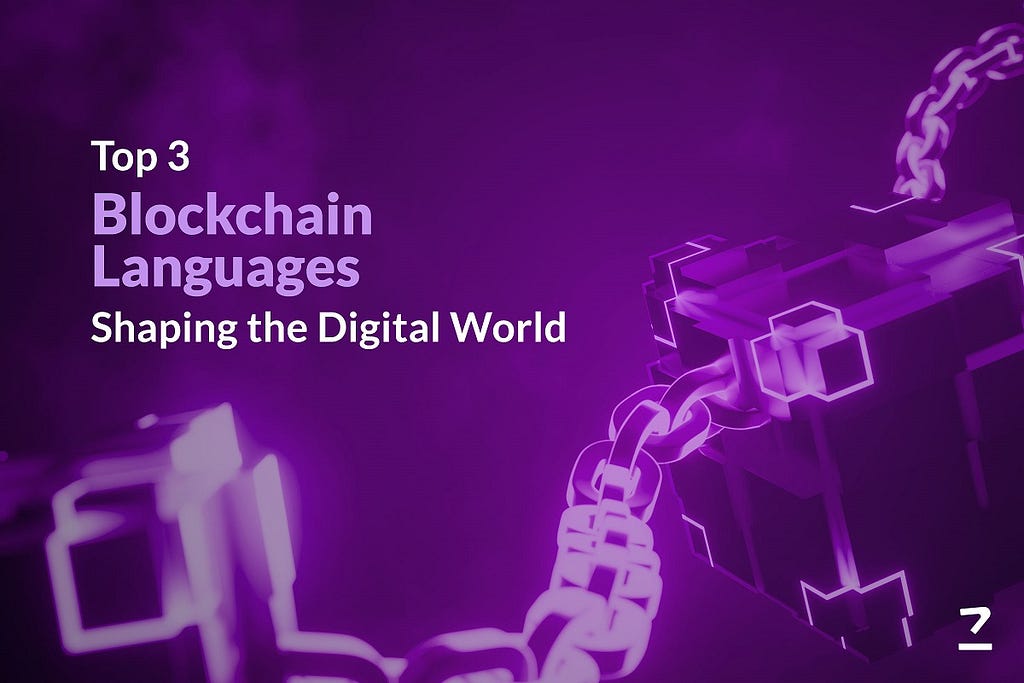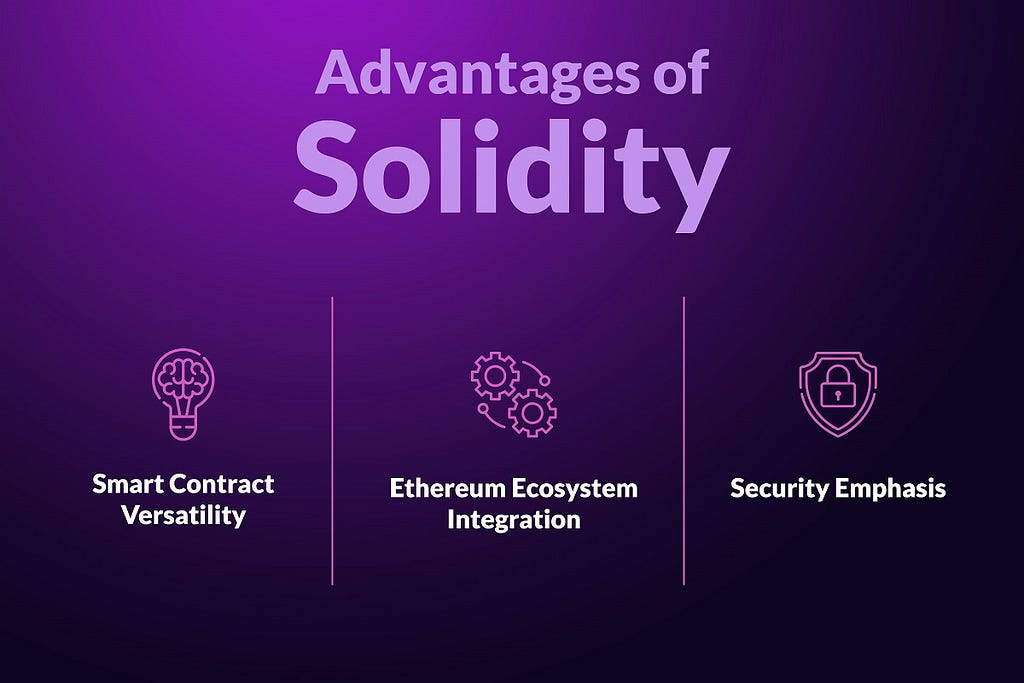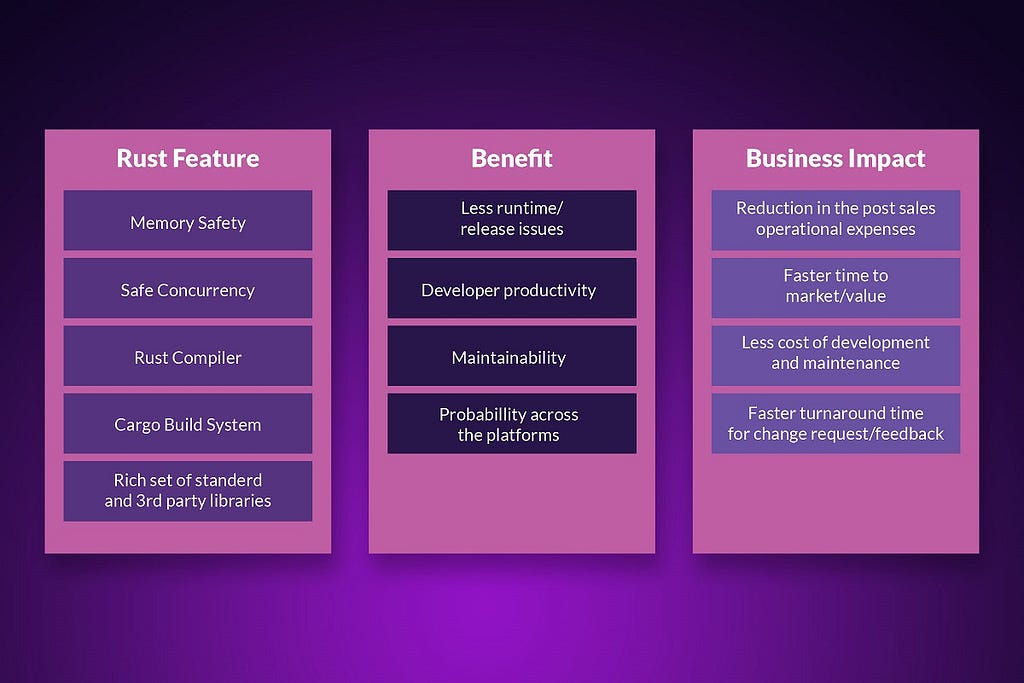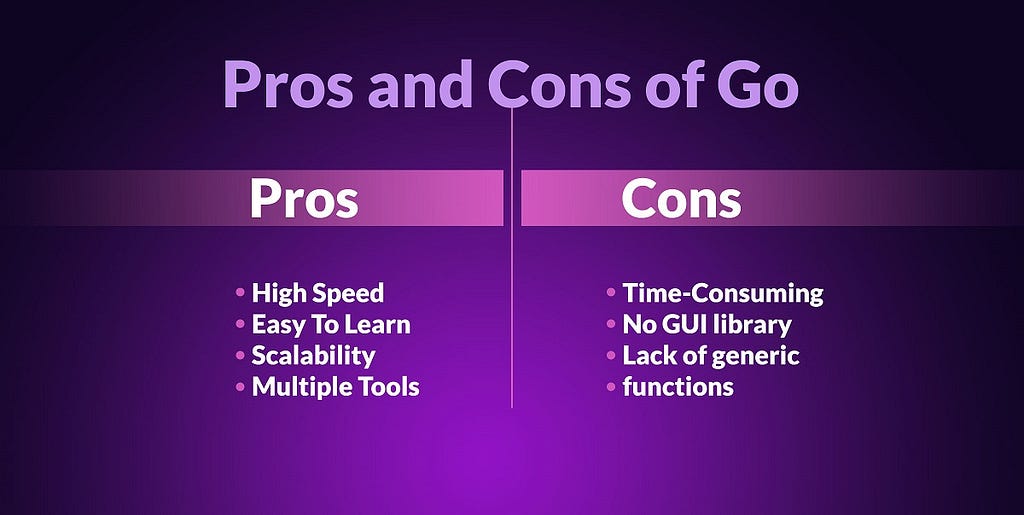
Blockchain is a revolutionary technology that enables secure, decentralized, and transparent transactions of data and value. Blockchain applications, or DApps, are built using smart contracts, which are self-executing programs that run on a distributed network of nodes. To write smart contracts, developers need to use specialized programming languages that are designed for blockchain platforms. In this blog, we will explore the top three blockchain languages that are shaping the future of the internet: Solidity, Rust, and Go.
All these languages have different features, advantages, and challenges, but they all share a common goal: to create smart contracts and distributed applications that run on blockchain networks. We will compare their features, advantages, and challenges, and see how they are used to create innovative solutions in various domains such as finance, supply chain, gaming, and social media.
Solidity
Solidity is a statically-typed programming language, which is purpose-built for crafting smart contracts that fuel the decentralized revolution, particularly on the Ethereum blockchain. Solidity is influenced by C++, Python, and JavaScript, and runs on the Ethereum Virtual Machine (EVM). It allows developers to create complex user-defined types, libraries, and object-oriented concepts like inheritance. Solidity also supports modifiers, events, structs, enums, and error handling, making smart contract development easier and more secure.
Advantages

Smart Contract Versatility: Solidity’s forte lies in its ability to create versatile and complex smart contracts. These contracts automate processes, ranging from financial transactions to the execution of business logic, leading to trust and transparency in decentralized applications.
Ethereum Ecosystem Integration: Solidity’s close association with Ethereum ensures seamless integration into the Ethereum ecosystem. So when you Hire Solidity Developers, they benefit from an extensive array of tools, libraries, and community support, streamlining the development and deployment of decentralized applications.
Security Emphasis: Solidity places a premium on security features, as it incorporates cryptographic libraries and regularly updates to address vulnerabilities. This commitment to security is critical, given the immutable nature of blockchain transactions and the potential financial ramifications of coding errors.
Challenges
Learning Complexity: For developers unfamiliar with blockchain concepts, Solidity’s syntax and the paradigm shift to decentralized programming can be challenging. Overcoming this learning curve is crucial to harnessing the language’s potential fully.
Security Risks and Auditing: Despite its emphasis on security, Solidity is not immune to vulnerabilities. Code bugs, especially in smart contracts, can lead to catastrophic consequences. Rigorous testing, peer reviews, and professional audits are imperative to minimize security risks.
Evolving Standards and Updates: Blockchain technology evolves rapidly, with frequent protocol updates and emerging standards. It is crucial for the developers to stay vigilant to these changes to ensure that their Solidity code remains compatible with the latest advancements in security measures.
Rust
Rust is a multi-paradigm, general-purpose programming language that has swiftly become a linchpin in the blockchain development sphere. It is celebrated for its emphasis on performance, memory safety, concurrency, and zero-cost abstractions. Rust enforces memory safety, meaning that all references point to valid memory, without requiring the use of automated memory management techniques such as garbage collection. It also prevents data races by tracking the object lifetime of all references in a program during compilation. Rust was influenced by ideas from C++ and functional programming, including immutability, higher-order functions, and algebraic data types.
Advantages
Memory Safety and Concurrency Mastery: Rust’s ownership system, coupled with strict borrowing rules, ensures robust memory safety without compromising on concurrency. This feature plays a vital role in blockchain development, where secure and parallel processing is crucial for optimal performance.
Top-Tier Performance: Rust’s zero-cost abstractions allow developers to create code that rivals the speed and efficiency of low-level languages like C and C++. This capability is indispensable for resource-intensive blockchain applications, delivering Rust development services with exceptional performance without compromising on safety.
Thriving Community and Innovation Hub: Rust boasts a dynamic and expanding community that actively contributes to its ecosystem. Developers benefit from a wealth of libraries, tools, and community-driven resources, fostering innovation and accelerating the language’s evolution.
Challenges
Learning Curve: Rust’s unique ownership model and borrowing system can present a steep learning curve, especially for developers accustomed to more lenient languages. However, the investment in mastering Rust pays off in terms of enhanced security and performance.
Stringent Compiler Enforcement: Rust’s strict compiler, while ensuring robust code, can be unforgiving for developers new to the language. Adherence to ownership and borrowing rules may initially lead to frustration, but it ultimately contributes to the creation of reliable and secure code.
Evolving Ecosystem: Though Rust’s ecosystem is rapidly expanding, it is still maturing compared to more established languages. Developers may encounter occasional limitations in terms of available libraries and tools, necessitating a proactive approach to problem-solving and contribution to the growing ecosystem.

Go
Go, also known as Golang, is an open-source programming language developed at Google by Robert Griesemer, Rob Pike, and Ken Thompson. It has gained prominence as a language that prioritizes simplicity and efficiency. Go is influenced by C, but also has features such as memory safety, garbage collection, and structural typing. With a strong emphasis on performance and concurrent processing, partnering with a trusted Golang development company is particularly well-suited for building scalable and robust decentralized applications. Furthermore, its concise syntax and focus on readability make it an appealing choice for blockchain development.
Advantages
Concurrent Processing: Go excels in handling concurrent tasks efficiently, a crucial requirement in blockchain development. Its goroutine feature simplifies concurrent programming, allowing developers to create concurrent applications with ease.
Simplicity and Readability: Go’s minimalist syntax and straightforward design contribute to code readability. This simplicity accelerates development and facilitates collaboration, making it an accessible language for both seasoned and novice developers entering the blockchain space.
Efficiency in Development: Go’s rapid compilation and built-in tools streamline the development process, promoting quick iteration. This efficiency is valuable in the fast-paced environment of blockchain, where timely development and deployment are essential.
Challenges
Generics Support: Go historically lacked support for generics, limiting its flexibility in handling different data types. While efforts have been made to introduce generics in newer versions, some developers may find the absence restrictive, particularly in certain blockchain scenarios.
Relatively Smaller Ecosystem: Compared to more established languages, Go’s ecosystem for blockchain is smaller. Developers might encounter fewer specialized libraries and tools, requiring creativity and adaptability in addressing specific development needs.
Learning Curve for New Concepts: Developers transitioning from languages with extensive frameworks and abstractions may face a learning curve when adapting to Go’s minimalistic approach. However, this curve is generally considered manageable due to Go’s design principles.

Conclusion
All three languages that we discussed above — Solidity, Rust, and Go — stand as pillars of innovation, each contributing its unique strengths to the decentralized technology. These languages not only represent technological advances but also the collaborative spirit driving innovation. Whether navigating Solidity’s learning curve, embracing Rust’s ownership model, or appreciating Go’s concise syntax, developers find themselves at the forefront of a transformative era.
The future of the digital world is undeniably intertwined with blockchain technology, and these languages play an instrumental role in shaping this future. The ongoing evolution of these languages, coupled with the ingenuity of developers, promises continued breakthroughs in decentralized applications across finance, supply chain, gaming, and beyond. As we explore this new frontier, Solidity, Rust, and Go offer us a way to achieve a more decentralized, secure, and transparent digital world.
Original Source — https://www.codezeros.com/top-3-blockchain-languages-shaping-the-digital-world







